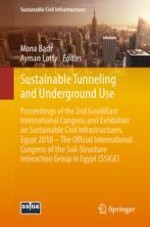This volume comprises a set of high-quality, refereed papers that address the different aspects related to the geotechnical and structural design and construction of deep excavations, tunnels and underground space facilities as well as the effect of their construction on the surroundings. The papers cover planning, design, modeling, monitoring and construction aspects of these essential structures. The utilization of underground space using tunneling and deep excavations has become much needed to support the increasing needs of urban environments and to allow for functional extensions and sustainable developments in heavily congested areas. Recently, more utilities and transportation transit systems have been relocated underground because of scarcity of surface space. The growing interest in the use of underground space has necessitated commensurate advancements in related fields (geotechnical engineering, engineering geology and structural engineering), design tools, construction techniques and analytical and interpretation methods. The volume is based on the best contributions to the 2nd GeoMEast International Congress and Exhibition on Sustainable Civil Infrastructures, Egypt 2018 – The official international congress of the Soil-Structure Interaction Group in Egypt (SSIGE).
